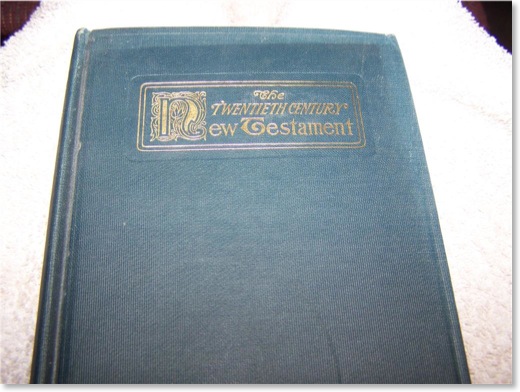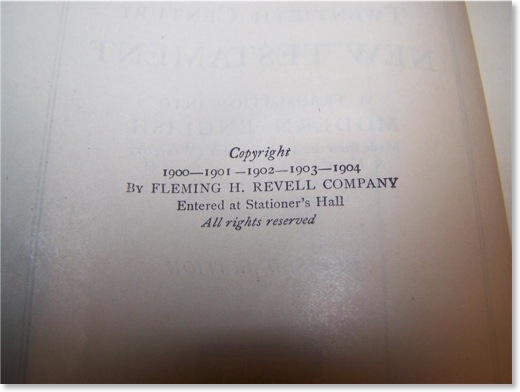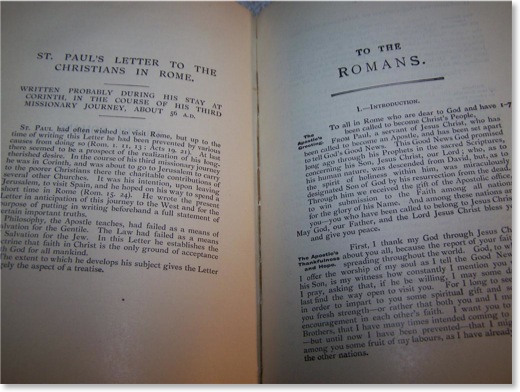Newest Acquisition: the Twentieth Century New Testament



I haven't had a whole lot of time to spend with it yet, but I note that the gospels begin with Mark under the conviction that this was the first gospel written. Also Paul's letters begin with 1 Thessalonians since most believe this was the first letter written by Paul. Also it's worth noting that James is included before Paul's letters.
The Twentieth Century New Testament (TCNT) shows a concern almost a century old that the KJV used outdated and archaic language with the risk that modern readers exposed only to the 1611 translation might consider the Bible to be irrelevant, merely an ancient document of history. It's also worth noting that the TCNT is one of the first translations based on the Westcott and Hort text.
I ran a search for the title through the theological journals I have in Accordance and I found a review in Bibliotheca Sacra from 1963. The review itself, written by S. D. Toussaint, was in reference to a recent Moody Press reprint of the TCNT. Below is an edited version of the review with pertinent information retained:
This is not a mid-twentieth century translation but a pre-twentieth century work based on the text of Westcott and Hort. It [was] first published in 1900 and made by twenty unnamed men and women from “various sections of the Christian Church.”
The 1900 publication has the books arranged in a chronological order. Significantly, Mark is given as the earliest gospel; strangely, Titus is placed after 2 Timothy. [The TNTC provides] an introduction to each book containing data concerning authorship, date, sources, etc. Some of these occasionally reveal a liberal view. (In the introduction to Revelation it is stated concerning its authorship, “There is at present no certain clue to his identity").
...The preface of the original translation...does not claim this is a verbal translation but it also denies being a paraphrase. It asserts: “…The effort has been made to give the exact force and meaning in idiomatic modern English.” Despite this fact, it definitely tends toward a paraphrase. Aside from this shortcoming, the translation does have a number of advantages. The books are divided into sections and paragraphs; outlines are incorporated into the books; quotations are indicated by finer print; and measures, values, and titles are given in the nearest English equivalents.
This translation may prove to be useful to the Bible student who would like to add another translation to his already extended shelf of “twentieth century” renditions.









